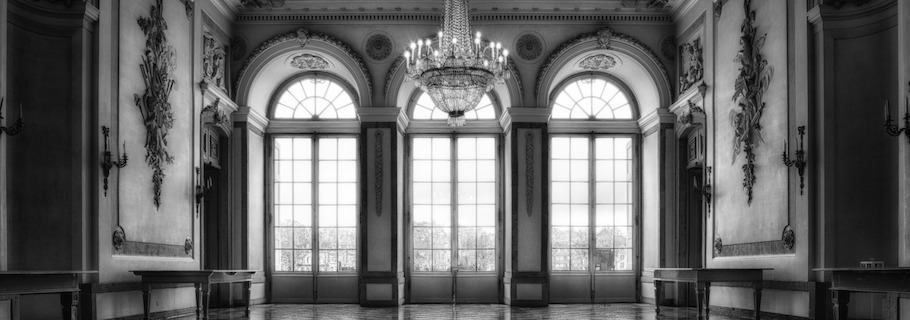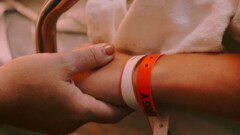Over the past eighteen months, I have been traveling the world searching for objects related to the history of Christianity. Over the course of my journey I have visited some of the world’s great museums. And as much as I have enjoyed these world-class institutions, I have also found special benefit in visiting much smaller ones. While the great museums try to tell the stories of entire ages and civilizations, their smaller siblings usually have much more modest goals—to tell the story of a short period or a single individual. Often they do it well. Here are a few of my favorite “minor” museums from around the world.
Wilberforce House Museum in Hull, England. This museum in William Wilberforce’s childhood home displays a number of artifacts related to his life, including articles of clothing and parts of his library. Better, it powerfully tells the story of his efforts to abolish the Atlantic slave trade. The jewel of the collection is the Brookes slave ship model which figured prominently in the history of abolition. There is also a great reproduction of Thomas Clarkson’s traveling chest (with the original at Wisbech & Fenland Museum). (Info)
Livingstone Museum in Livingstone, Zambia. This is one of two museums in the world dedicated to missionary-explorer David Livingstone (though the other, in Scotland, is currently closed for renovations). The museum in Zambia has quite a large exhibit dedicated to Livingstone, and includes a number of his possessions, from guns to clothes to items he carried during his travels. There is also a sizeable collection of his letters. Apart from the mighty Victoria Falls, this museum may be the best tourist spot in Livingstone. (Info)
Hudson Taylor Memorial Tower in Zhenjiang, China. This memorial to Hudson Taylor opened less than a year ago, so is not yet widely known. It also opened at a time when the kind of tourists who would be most interested in it are avoiding China. The only objects it contains that are directly related to Hudson Taylor are his tombstone and that of his wife—tombstones that were lost for many years and, along with the bodies, have only just been recovered. But it has some wonderful exhibits about the history of Christian missions in China and about the centrality of prayer in missions. (Note: I believe you need an appointment to visit; have a local get in touch with Xuande Church to arrange it.) (Info)
The Elms in Tauranga, New Zealand. The Elms is a historic mission house of the Church Missionary Society. The station was established in 1838 by Alfred Brown who, rather humorously, finished building his library before his house. Brown was successful in his missionary work, but saw much of it fall apart when tensions between the government and native Maori flared up into open warfare. The house eventually became a private residence but, more recently, was purchased by a trust and opened to the public. The location is beautiful and the curator both knowledgeable and friendly. (Info)
Lutherhaus in Wittenberg, Germany. Lutherhaus (Luther House) is a museum in the Augustinian monastery once known as the Black Cloister. This was Martin Luther’s home first as a Roman Catholic monk, then as a Protestant pastor. Though it does not hold a vast collection, it holds several significant objects that are well worth seeing. My favorite is an indulgence box, the likes of which Johann Tetzel paraded around Germany, leading Luther to write his 95 Theses. The room in which Luther carried out his famous “table talks” remains largely as it was five hundred years ago. (Info)
Musée du Désert in Mialet, France. This museum is dedicated to the “wilderness” period in which France’s Protestant Huguenots were under intense persecution by the Roman Catholic Church and the French rulers who were under the Church’s sway. It houses many historical artifacts, including pulpits that were disguised as wine casks and mirrors designed to disguise a Bible. It also shows a secret place where a pastor might hide while the authorities tore apart the house searching for him. I also recommend the nearby Musée du Vivarais protestant which is in the family home of Pierre and Marie Durand. (Info)
Yanghwajin Foreign Missionary Cemetery in Seoul, South Korea. The cemetery is the resting place for a host of Christian missionaries to Korea, many of whom experienced great suffering as they carried out their ministries. It is very moving to walk among the graves and consider the many men, women, and children buried there. Also on the grounds is an excellent modern museum tracing some of the history of the Christian faith in Korea, with particular emphasis on the Bible. (Info)
New Room in Bristol, England. New Room is the oldest Methodist building in the world. Founded by John Wesley in 1739, it was for many years the most important Methodist church outside London. The building is still used to host worship services, but is better known as a museum of Methodism and the location of the Methodist archives. The museum holds a number of interesting artifacts, though not quite as many as the Museum of Methodism in London. Charles Wesley’s home is a short walk away and open by appointment. (Info)
Briefly, here are a few others:
- William Carey Museum at Serampore College in Serampore, India. Much of the small collection is (literally) junk or kitsch, but there are a few significant objects. It is on the grounds of the university Carey founded.
- The Korean Christian Museum in Seoul, South Korea. This museum, on the grounds of Soongsil University, holds a wealth of objects related to the history of Christianity in Korea.
- John Bunyan Museum in Bedford, England. This museum dedicated to Bunyan borders on the cheesy at times, but has some unique and significant items from the author of Pilgrim’s Progress.
- Museum of Bath Architecture in Bath, England. This museum, housed in a former church building, holds several objects—the only ones I know of—that are related to Christian philanthropist Selina Hastings, Countess of Huntingdon. You can also see the pulpit (where George Whitefield preached the dedication service) and three great stone eagles commissioned by Hastings in honor of family members.
- Billy Graham Center Museum in Wheaton, Illinois. On the grounds of Wheaton College, this museum tells the story of Christianity in America with a special focus on Wheaton alum Billy Graham. It holds several key artifacts from his life, including his high-tech(for the time) traveling pulpit.










